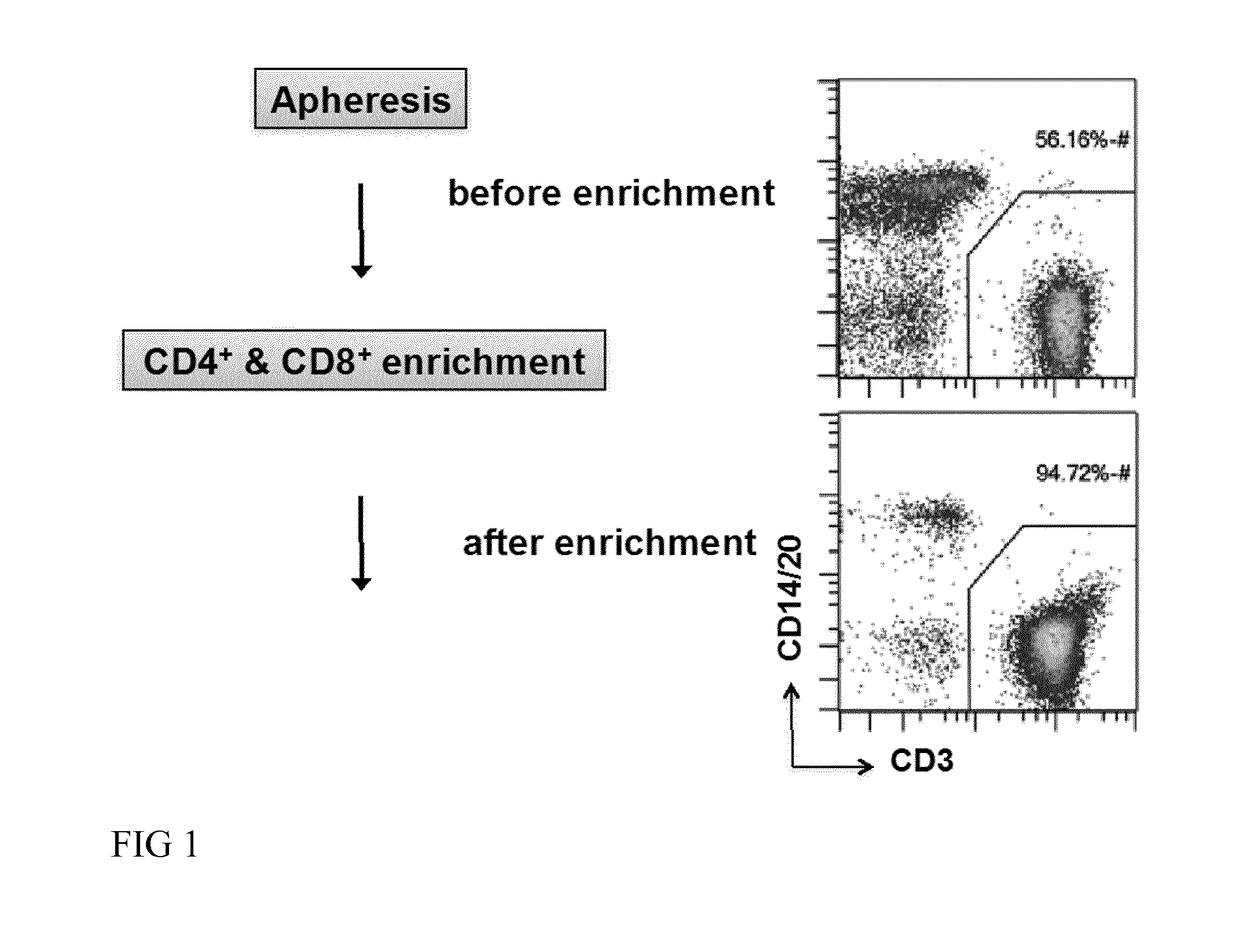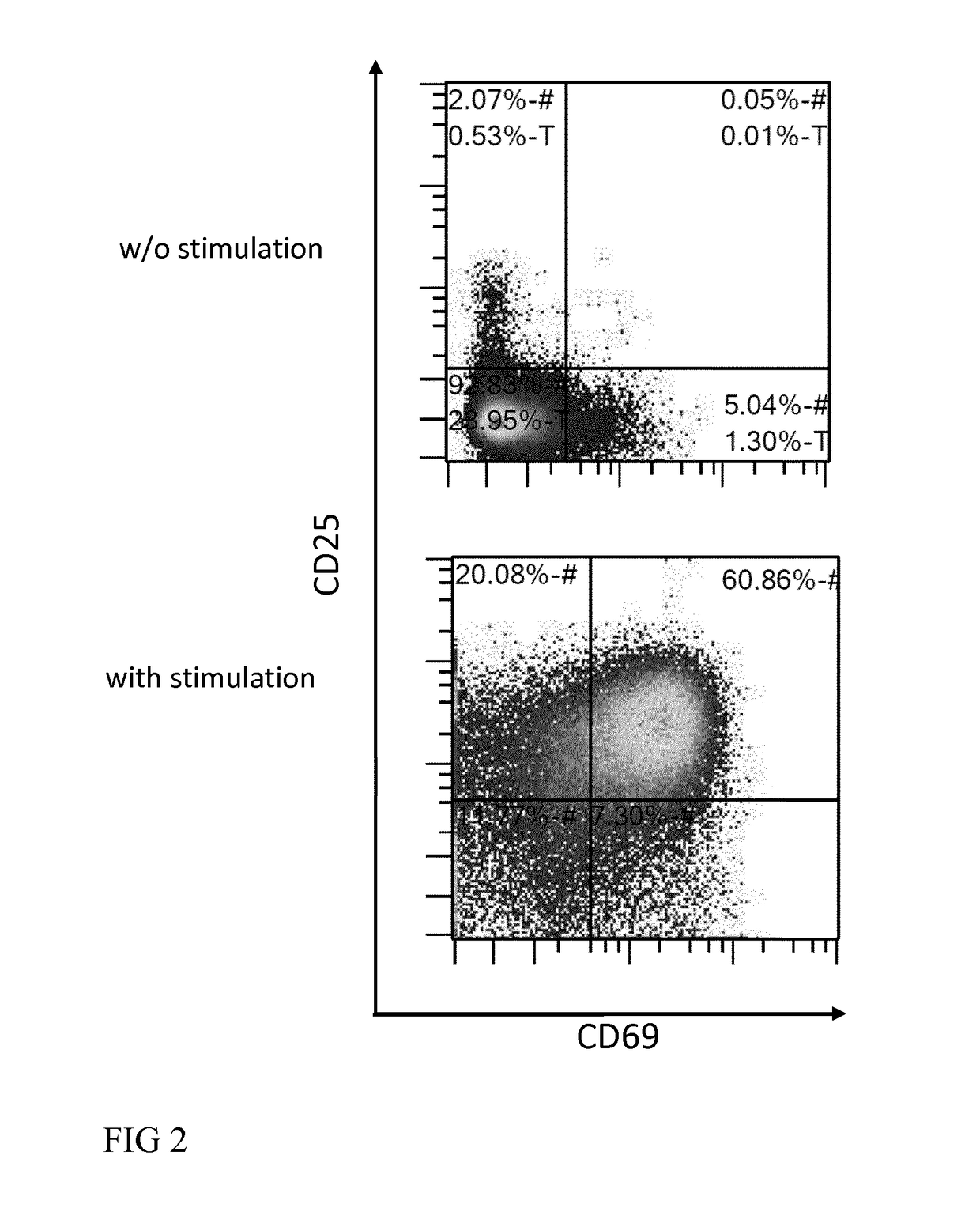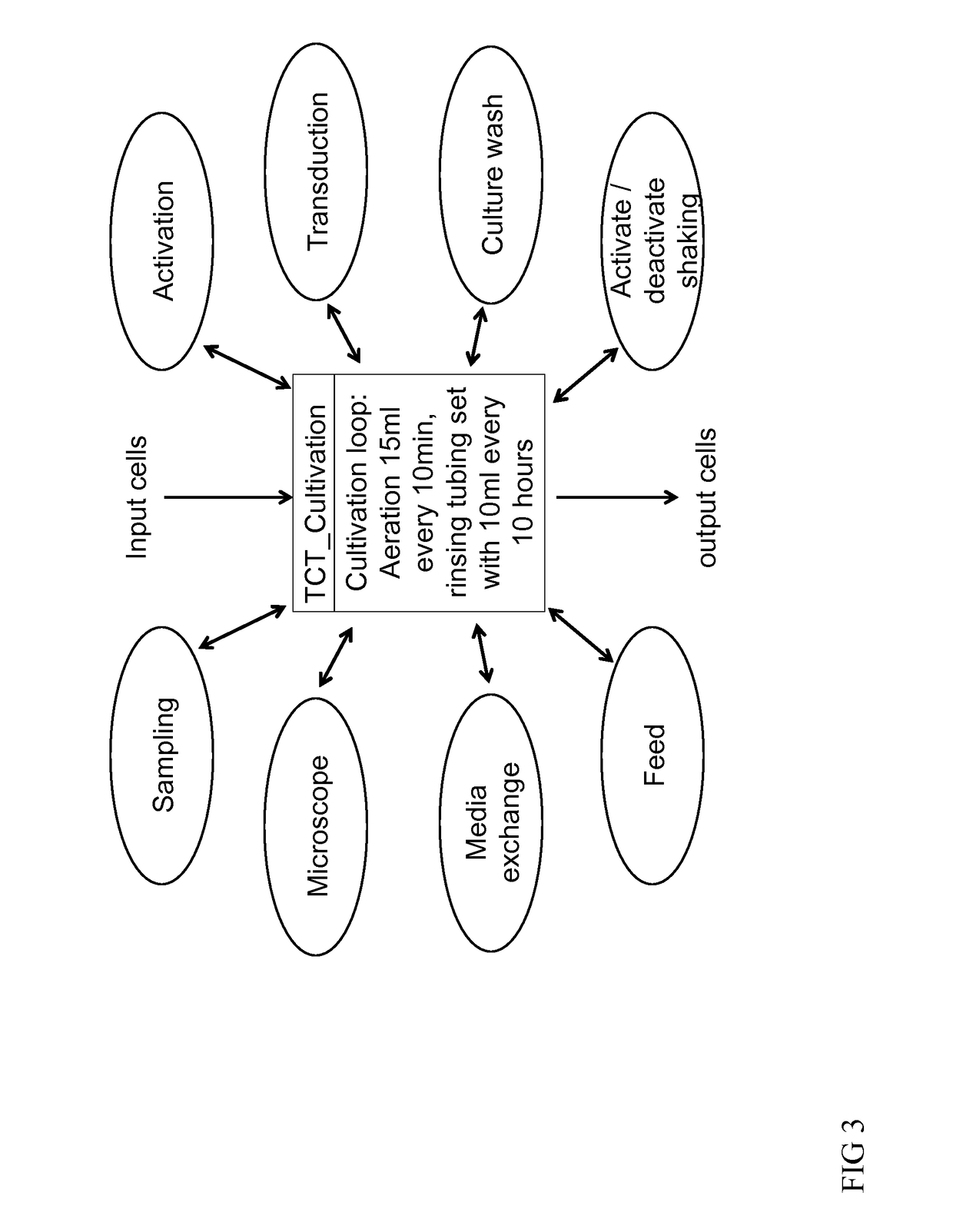Method for automated generation of genetically modified T cells
a technology of genetically modified cells and automated generation, which is applied in the direction of cell receptors/surface-antigens/surface-determinants, cancer antigen ingredients, cell receptors/surface-antigens/surface-determinants, etc., can solve the problems of difficult automation of biological processes, and achieve the effect of robust manufacturing and better transduction efficiency
- Summary
- Abstract
- Description
- Claims
- Application Information
AI Technical Summary
Benefits of technology
Problems solved by technology
Method used
Image
Examples
embodiments
[0066]In one embodiment of the invention, a patient sample, for example, comprising T cells, T cell subsets and / or T cell progenitors of interest are introduced into the chamber of a closed and sterile culture system such as the CliniMACS Prodigy®. The sample is centrifugated, preferentially using optical density phase detection, excess erythrocytes are removed, the cell sample is washed using e.g. the CliniMACS Buffer (Miltenyi Biotec GmbH) to avoid cell aggregation, and magnetically labeled with a magnetic cell separation reagent such as CliniMACS CD4 and CD8 Reagent (Miltenyi Biotec GmbH). After labeling, cells are washed, magnetically enriched via an integrated magnetic cell selection column and then returned to a cell culture chamber.
[0067]In the cell culture chamber, the T cells can be activated upon steady or shaking culture conditions with one or a combination of reagents capable of inducing T cell proliferation such as agonistic antibodies (e.g. anti-CD3 and anti-CD28), cyt...
example 1
Manufacturing of Gene-Modified T Cells Using Several Closed Sterile Tubing Sets
[0115]A leukapheresis bag (100-200 ml) from a donor is connected, by sterile welding to the Tubing set TS 100 (Miltenyi Biotec GmbH) installed on the CliniMACS Prodigy® device. CliniMACS buffer as well as CliniMACS CD4 and CD8 reagents (Miltenyi Biotec GmbH) are also connected to the same Tubing set. An enrichment program is launched. The tubing set is automatically primed with buffer, then the leukaphereis product is transferred to the chamber of the tubing set where it is washed 3 times with CliniMACS buffer in order to remove serum and platelets. A red cell reduction is also performed to remove excess erythrocytes. The CliniMACS CD4 and CD8 reagents are transferred to the cells into the chamber for magnetic labeling of the CD4 and CD8 positive cells. After 30 min incubation at room temperature, the magnetically labeled cells are automatically transferred onto a column placed in a magnetic field. The la...
example 2
Manufacturing of Gene-Modified T Cells Using a Single Closed Sterile Tubing Set
[0116]A buffy coat bag of 100-200 ml from a donor is connected, by sterile welding to the Tubing set TS520 (Miltenyi Biotec GmBH) installed on the CliniMACS Prodigy® device. CliniMACS buffer as well as CliniMACS CD62L reagent, MACS GMP CD3 / CD28 Kit and MACS GMP TexMACS medium containing 10 ng / ml IL-7 and IL-15, are also connected to the TS520 (all Miltenyi Biotec GmbH). The activity matrix is then filled with activities (e.g. transduction, feed, wash, final formulate) and their parameters (e.g. day, volume, temperature) of the automated manufacturing run. The programmed software is then launched (FIG. 3). As in example 1 the leukapheresis is washed. Labeling takes place at 4-8° C. (this is important in order to enrich CD62L positive cells as CD62L is shed from the surface of cells at room temperature). Labeled cells are enriched and eluted into a reapplication bag which is part of the tubing set. The prog...
PUM
| Property | Measurement | Unit |
|---|---|---|
| size | aaaaa | aaaaa |
| time | aaaaa | aaaaa |
| time | aaaaa | aaaaa |
Abstract
Description
Claims
Application Information
 Login to View More
Login to View More - R&D
- Intellectual Property
- Life Sciences
- Materials
- Tech Scout
- Unparalleled Data Quality
- Higher Quality Content
- 60% Fewer Hallucinations
Browse by: Latest US Patents, China's latest patents, Technical Efficacy Thesaurus, Application Domain, Technology Topic, Popular Technical Reports.
© 2025 PatSnap. All rights reserved.Legal|Privacy policy|Modern Slavery Act Transparency Statement|Sitemap|About US| Contact US: help@patsnap.com



